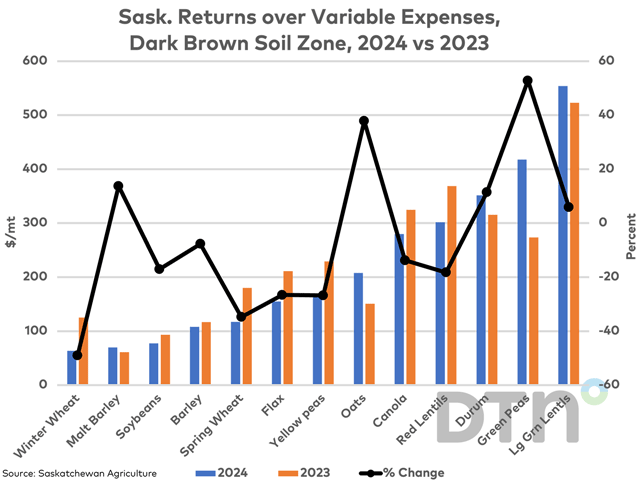
This study looks at estimated crop returns found in the Saskatchewan government's annual Crop Planning Guide for 2024, which estimates costs and returns for 31 crops.

This study looks at estimated crop returns found in the Saskatchewan government's annual Crop Planning Guide for 2024, which estimates costs and returns for 31 crops.
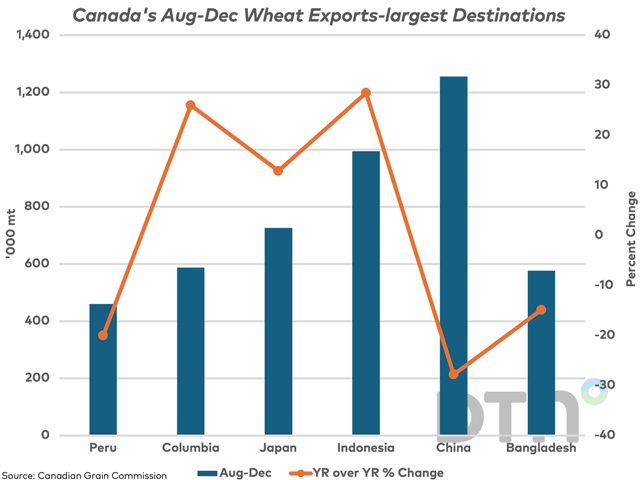
This study looks at the CGC's August-through-December export data for wheat (excluding durum). Movement remains favorable despite growing global competition.
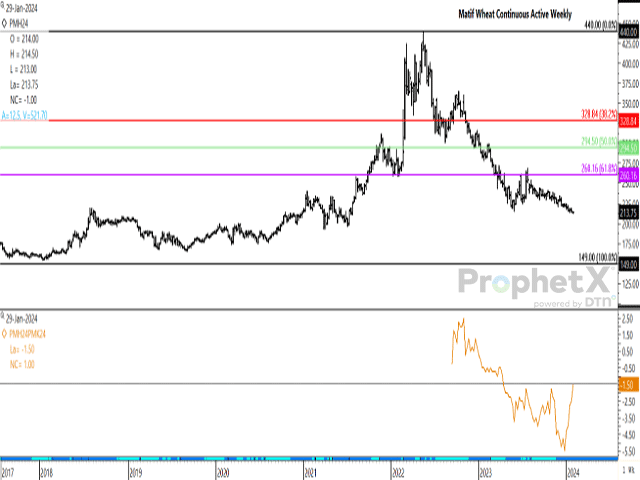
March European milling wheat reached a fresh low on Monday on bearish fundamental data released.
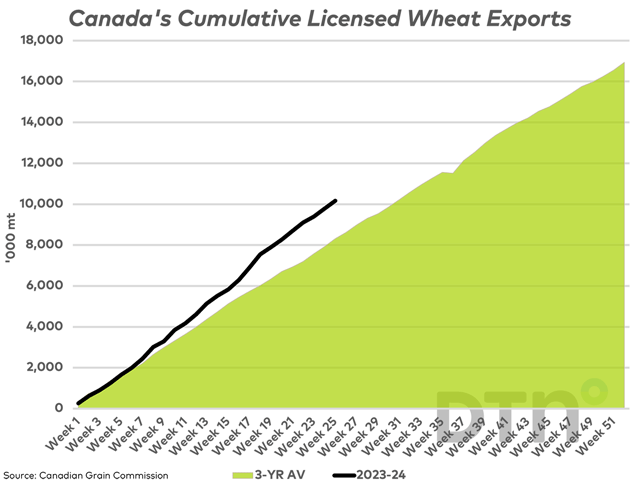
Canada's wheat exports continue at a pace well ahead of the current forecast pace.
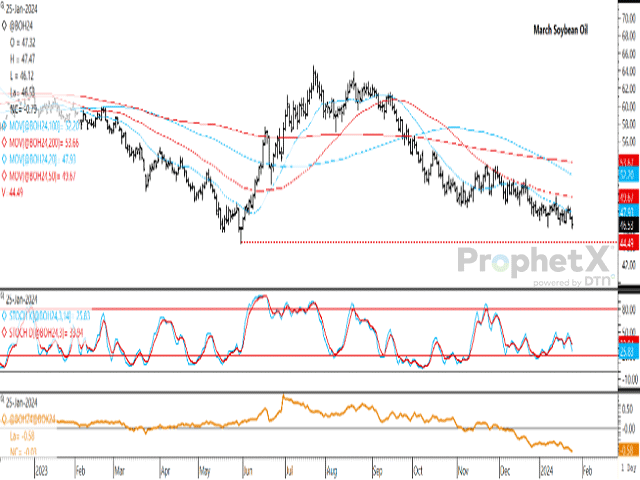
Soybean oil trade faced heavy selling on Thursday, while the contract's May 2023 low is the next level of potential chart support.
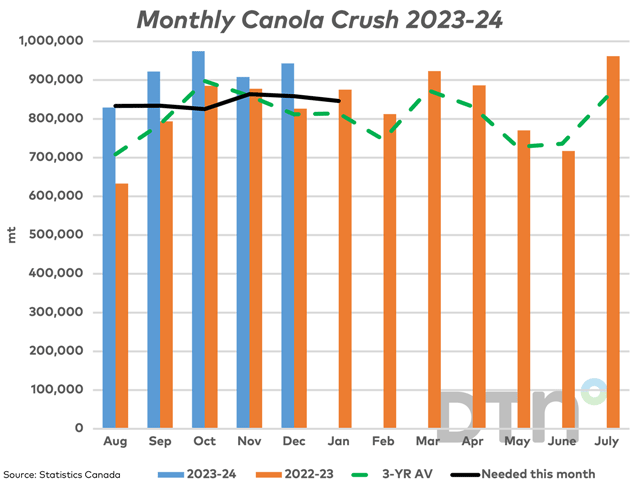
Canada's canola crush increased for a third time in four months, while runs ahead of the pace needed to reach the current government forecast.
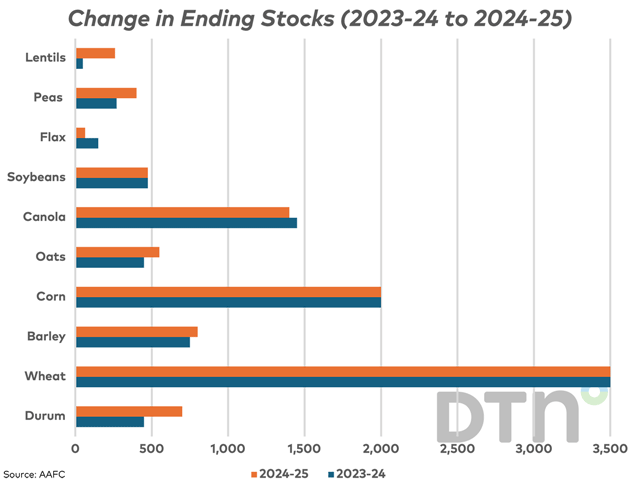
AAFC's earliest forecast for 2024-25 shows higher production and supply for Canada's principal field crops, while higher forecast exports and domestic use are unable to prevent a rise in total grain stocks.
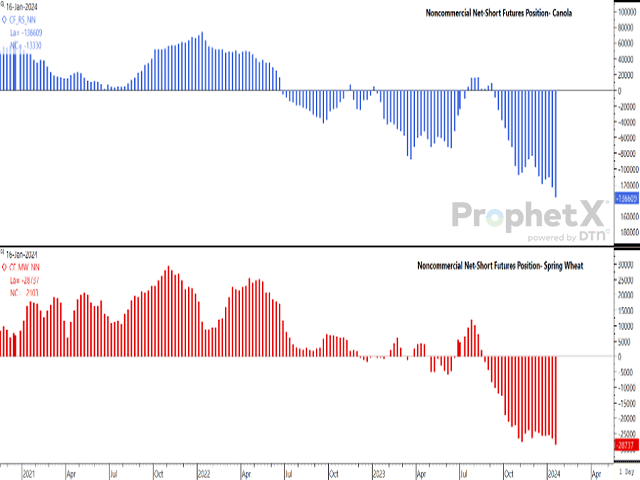
For the second time since late October, noncommercial traders hold a record bearish net-short position in both hard red spring wheat and canola futures.
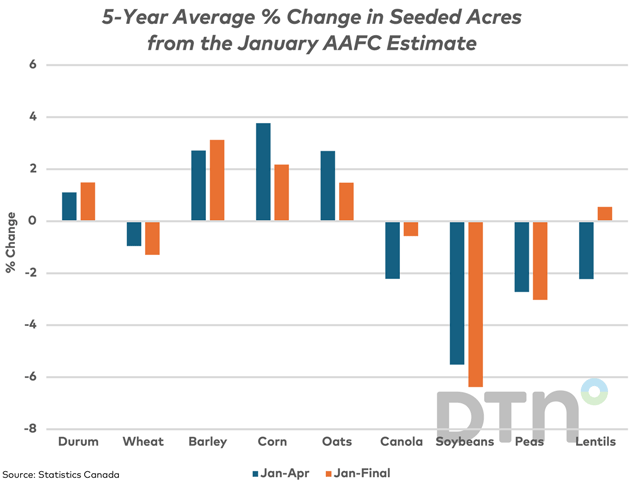
AAFC will soon release its initial forecasts for principal field crops for 2024-25. This study looks at the percent change in Statistics Canada's estimated seeded acres from this initial estimate.

Canada's government and agricultural industry may once again be tested with a potential strike looming at the Port of Montreal.

January tends to be the weakest month of the year for Canada's currency, while has weakened against the U.S. dollar in 10 of the past 12 sessions.

The USDA's January estimates for Canadian production for select crops changed little in January, although the USDA did revise higher its forecast for Canada's all-wheat exports.
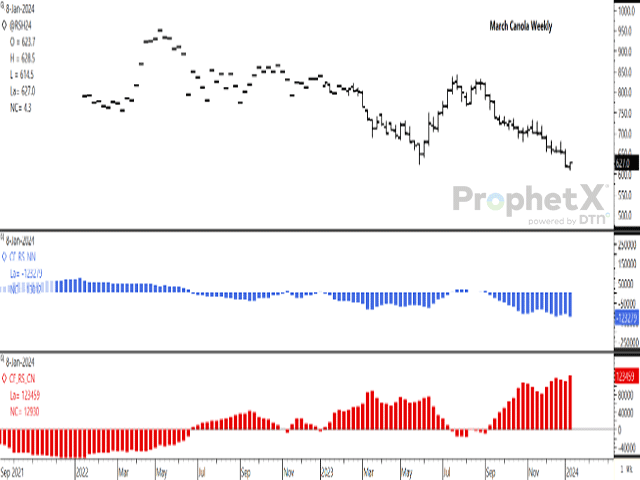
March canola recovered from a contract low this week to achieve a weekly gain for the first time in nine weeks.
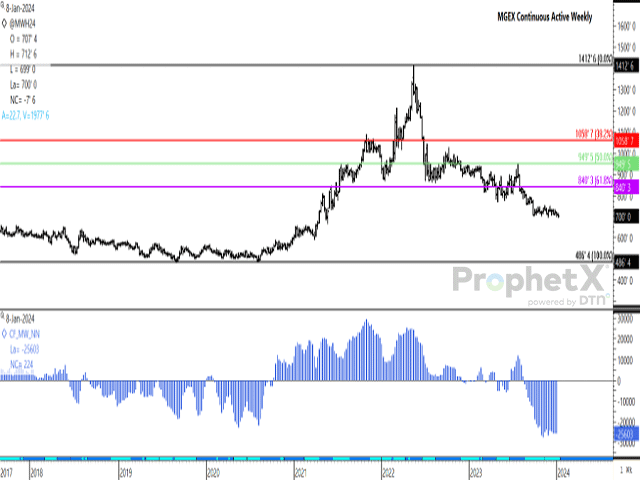
The March MGEX wheat contract is close to testing the contract's low, while speculative traders continue to hold a large net-short position.
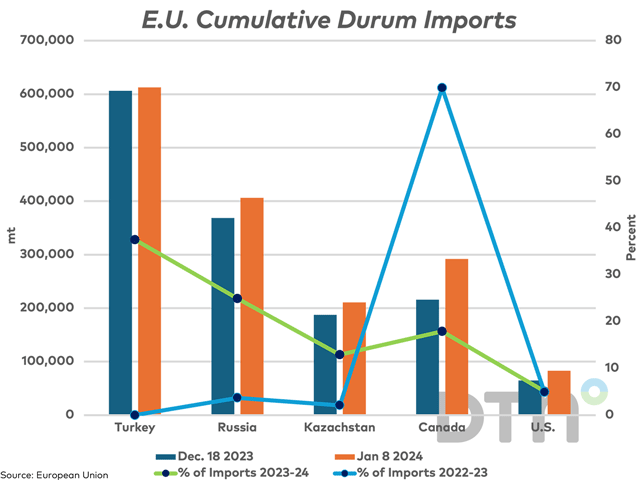
Over recent weeks, E.U. imports of durum from Turkey and Russia have slowed while imports from Canada have picked up.
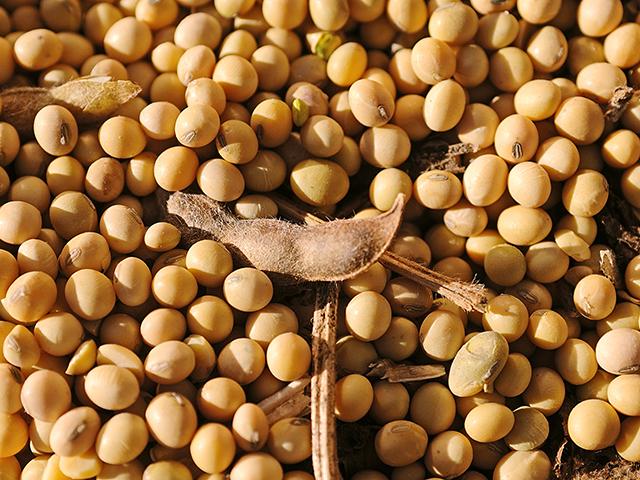
This is a look at Statistics Canada trade data as it relates to select crop and product trade.
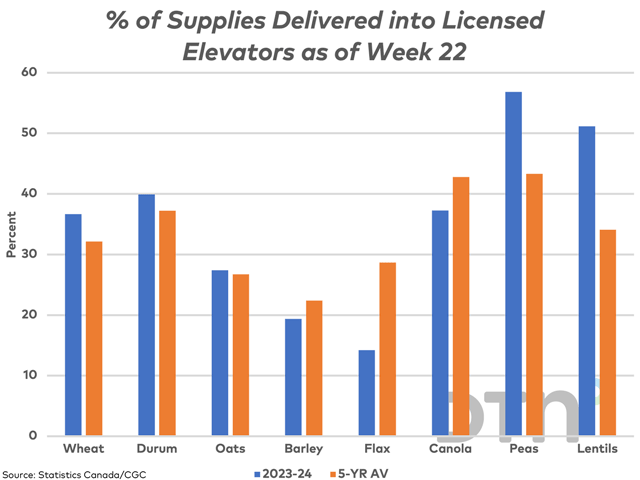
This study looks at producer deliveries of select crops as of week 22, while comparing this volume to the volume available for delivery over the past five years.
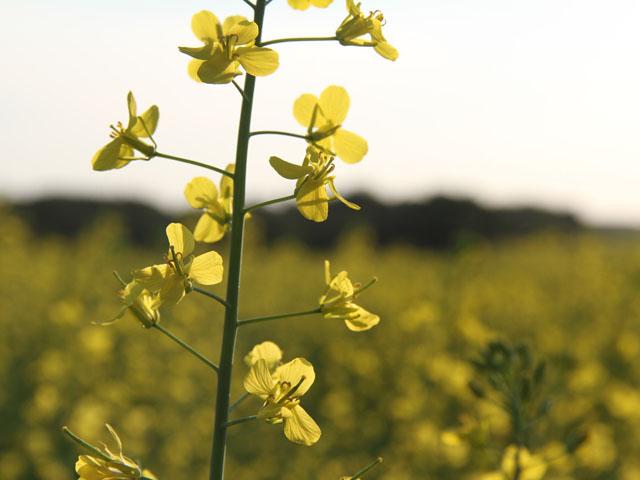
Canola contracts for 2023-24 reached contract lows this session and their lowest close seen over the life of the contract.

Negotiations with a federally appointed mediator will be crucial during Wednesday and Thursday of this week, while employees from two Locals of the Grain Services Union representing Viterra staff could strike as early as the afternoon of Jan. 5.
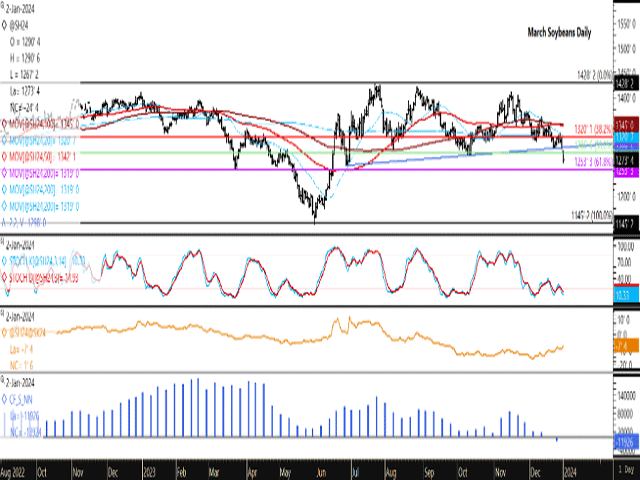
Noncommercial traders moved into a bearish net-short futures position during the holiday season and for the first time since February 2020, while continuing to control the current price direction. The March/May spread is seen narrowing a commercial sentiment slowly...
DIM[2x3] LBL[blogs-canada-markets-list] SEL[[data-native-ad-target=articleList]] IDX[2] TMPL[news] T[]
DIM[2x3] LBL[blogs-canada-markets-list-2] SEL[[data-native-ad-target=articleList]] IDX[5] TMPL[news] T[]